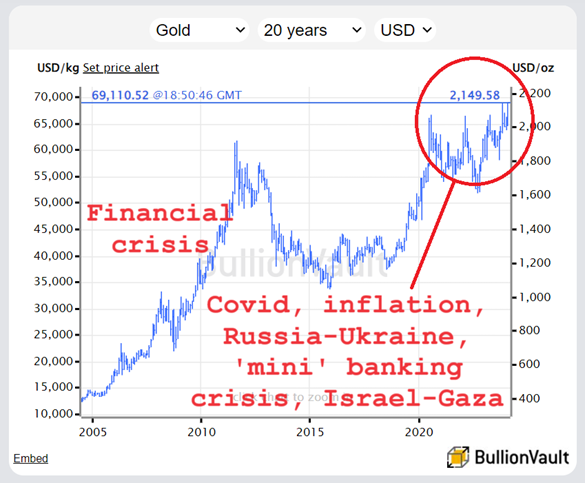Female First-Time Gold Investors +116% Since Covid
Women as % of new precious metals investors
Source: BullionVault
- "Mistrust" whether of government, central banks, the financial industry or the social/economic system more widely;
- "Inflation" in the cost of living, "debasement" and "devaluation" of currency;
- "Unsustainable debts" facing Western economies;
- Wanting to "diversify" their other investments, spreading risk overall, especially versus shares;
- "Uncertainty" and "crisis".














 Email us
Email us
